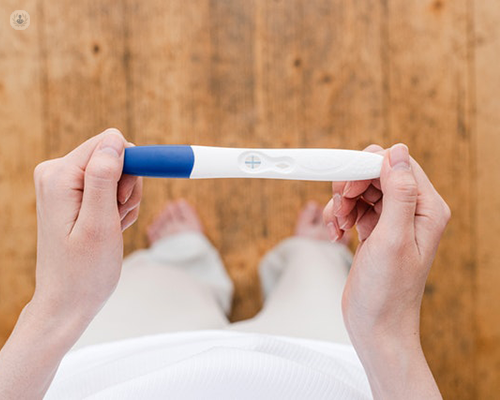Do uterine polyps affect fertility?
Escrito por:Overgrowth of the womb’s lining can cause growths to form on the cervix, known as uterine polyps. As well as causing unpleasant symptoms, polyps can cause fertility problems. To give expert insight on this issue, highly respected women’s health expert and consultant gynaecologist Mr Mahantesh Karoshi answers commonly asked questions about when and how uterine polyps are removed in this informative article.

What are uterine polyps?
Uterine polyps, which are overgrowths of lining of the womb, are commonly encountered abnormalities found in both fertile and infertile women. They most commonly affect:
- pre and post-menopausal women
- women with weight problems
- women who have gone through unsuccessful IVF cycles
- women who have taken Tamoxifen medication
Some women with polyps have no symptoms at all but others may experience heavy periods, bleeding between periods or excessive vaginal discharge. Uterine polyps vary in size and can range from the size of a seed to a golf ball.
Are uterine polyps dangerous?
Polyps in themselves are not cancerous but in rare cases, some polyps can become malignant (cancerous). The greater the number of polyps a patient has, the more likely they are to become cancerous.
Do uterine polyps affect fertility?
As clinicians, we are frequently challenged to determine whether polyps are likely to impair fertility. They can affect fertility but this often depends on the placement of the polyp or polyps on the cervix. Polyps have been associated with an increased likelihood of abnormal endometrial molecular expressions thought to impair implantation and early embryo development, meaning that they may prevent a woman from becoming pregnant or may make her more likely to experience a miscarriage. Consequently, women with polyps who wish to conceive should have them removed.
Do uterine polyps always need to be removed?
When the suspected presence of uterine polyps is picked up by ultrasound, this is usually confirmed by a procedure called hysteroscopy where a thin telescope is inserted into the uterine cavity. This allows the surgeon to look inside the uterus. Following this procedure, the majority of patients will be told that the polyps need to be removed.
The general recommendation for women with uterine polyps is to both remove the growth and send a sample of the tissue for further assessment. Examining the polyp tissue under a microscope allows us to rule out anything sinister.
How are uterine polyps removed?
Polyp removal is a relatively safe intervention. It is performed by hysteroscopy, using the same instruments as for the diagnosis. During the procedure, the polyp is both cut and retrieved. The root of the polyp is also fully excised as studies have shown that more serious complications can also develop at the base of the growth.
Mr Karoshi is grateful to his patients for providing consent to share their testimonials, including on uterine polyp removal, to help educate and reassure women experiencing similar health issues.
If you are concerned about uterine polyps and wish to book a consultation with Mr Karoshi, don’t hesitate to visit his Top Doctors profile.


